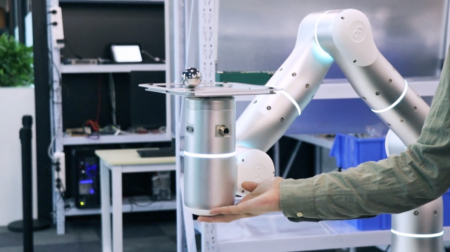Researchers at Cornell University in Ithaca, New York, have developed a soft robot muscle that can regulate its temperature through sweating.
This form of thermal management could allow high-powered robots to operate for sustained periods of time without overheating.
According to the researchers, one problem with making enduring, adaptable and agile robots is managing the robots’ internal temperature. It is reportedly a particular issue for soft robots, which are made from synthetic materials.
Thus, the team created nanopolymer materials for sweating via a 3D-printing technique called multi-material stereolithography, which uses light to cure resin into predesigned shapes.
Emmanuel Giannelis, Cornell’s vice provost for research, said: “Our contribution is the making of mixtures of nanoparticles and polymeric materials that basically allow us to control the viscosity, or flow, of these fluids.”
The researchers fabricated fingerlike actuators made up of two hydrogel materials that can retain water and respond to temperature like ‘smart’ sponges.
The base layer, made of poly-N-isopropylacrylamide, reacts to temperatures higher than 30°C (86°F) by shrinking, which squeezes water up into a top layer of polyacrylamide that is perforated with micron-sized pores.
These pores are sensitive to the same temperature range and automatically dilate to release the ‘sweat’, then close when the temperature drops below 30°C.
The evaporation of this water reduces the actuator’s surface temperature by 21°C (69.8°F) within 30 seconds, a cooling process that is around three times more efficient than in humans.
The team incorporated the actuator fingers into a robot hand that could grab and lift objects, concluding that autonomous sweating not only cooled the hand but also decreased the temperature of the object.
For the sweating to occur, the robot needs to be able to replenish its water supply, which has led one of the researchers to believe that one day robots will not only perspire like mammals, but drink like them too.
Rob Shepherd, associate professor of mechanical and aerospace engineering, who led the project, said: “I think that the future of making these more biologically analogous materials and robots is going to rely on the material composition. This brings up a point [about the importance of] multidisciplinary research in this area, where really no one group has all the answers.”







